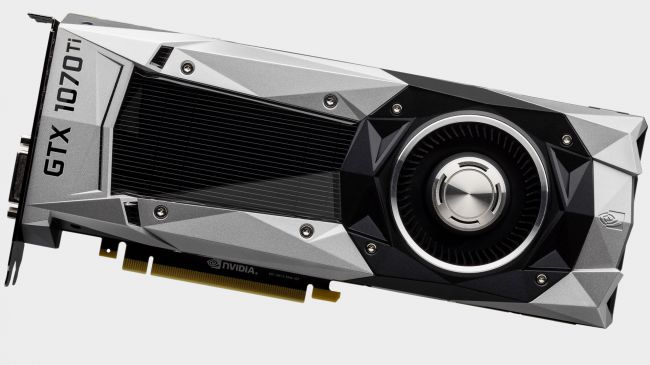Comparing two of the top GTX 10-series graphics cards
Nvidia’s RTX 20-series graphics cards also have left many feeling underwhelmed. Yes, they are all quicker than the’equivalent’ previous generation models, and matters like DLSS and ray tracing could widen the gap later on, but every tier of the RTX line moved upwards in pricing. The RTX 2070 efficiently takes over the 1080 cost, the RTX 2080 inherits the 1080 Ti price, and the RTX 2080 Ti sits in the Titan Xp’s gold-plated throne. Understandably, many are wondering whether they can just get with the former generation, and lest there was any doubt, the solution is unequivocally yes. You do not want the top graphics cards available to play matches, and even four year old cards like the GTX 980 are still doing fine at reduced settings.
Things are further complicated by the lack of both GTX 1080 and 1080 Ti cards. Nvidia has stated that these cards have been phased out, and that makes sense–their replacements are all here in the kind of the RTX lineup. However, what if you want to spend less than $500? The ideal candidate at this time is the GTX 1070 Ti, also with prices on the 1080 on the way up, it may soon be the only choice. But exactly how much performance do you end up by going with a GTX 1070 Ti vs. the GTX 1080? And exactly what are the major differences?
Let us start with the gaps first, as that is pretty straightforward. As discussed in our GTX 1070 Ti review, the features are a mix between the GTX 1070 and 1080. The 1070 Ti inherits the 1070’s usage of GDDR5 memory, as opposed to the 1080’s GDDR5X. This gives it the same bandwidth as the 1070, and 20 percent less bandwidth compared to 1080–or 27 percent less bandwidth than the 11Gbps 1080 models, which were never very common.
Nvidia offsets the reduction of memory by increasing the amount of GPU cores. The GTX 1070 Ti disables one SM about the GP104 core, leading to 2,432 CUDA cores, which is 27 percent greater than the vanilla GTX 1070. Compared to the 1080’s 2,560 CUDA cores, it is a five percent drop in core count. Clockspeeds are a mix between the 1070 and 1080. The base clock (that in my experience you virtually never see) is the same 1,607MHz as the 1080, while the increase clock is exactly the exact same 1,683MHz as the 1070–50MHz significantly less compared to 1080’s 1,733MHz boost clock. But that is only the reference clocks, and in several cases there are factory overclocked versions that end up operating at 1,800-1,850MHz whilst enjoying games, irrespective of which GTX model you are using.
Should you combine those three changes–memory bandwidth, core counts, and GPU clocks–you wind up with a card which should slot in directly between the GTX 1070 and GTX 1080. And that’s exactly what happens when we run the benchmarks. Here’s the overall summary for all recently tested graphics cards on 14 games, at four different setting/resolution combinations. I’ve highlighted the 1070 Ti and 1080, however you might also compare performance using all the newest RTX cards, or AMD cards, or other things.
In 1080p medium quality, the GTX 1080 is just five percent quicker than the GTX 1070 Ti. That is because memory bandwidth is less of a factor here. There are a couple games where the difference is wider, and others where it’s smaller, but it’s quite close overall. Transferring to 1080p ultra does not change things–the general gap is just five percentage in favor of the GTX 1080. And at 1440p ultra, it is still only 5.5 percent. See the trend yet? But finally, at 4k ultra, the 1080 requires a commanding lead of… 6.7 percent.
In other words, there where the GTX 1080 will manage games significantly better than the GTX 1070 Ti. Across the whole test suite of 14 matches and 4 resolutions–56 comparison factors –that the GTX 1080’s largest lead is in Strange Brigade, with a 10-14 percent edge based upon the resolution. And if you’re curious, the GTX 1070 Ti on average is about 15 percent faster than the GTX 1070, so the increase in core counts and clockspeed has a bigger impact than the absence of memory .
That is good news, because the GTX 1080 is on the way out, and also for the time being the GTX 1070 Ti remains readily available, using a current beginning cost of $380 after $20 lien. What’s that look like in FPS per unit, and terms of total price?
If you’re looking at the GPU prices and functionality, the midrange RX 570/580 and GTX 1060 cards require top honors, regardless of currency. Faster but expensive GPUs deliver diminishing returns. On the flipside, contain the base system price in the matrix, overall worth skews heavily toward quicker GPUs. The RTX 2080/2070 and GTX 1080 Ti/1070 Ti maintain the top four spots, with the 1080 ranking between 5th and 8th based on the market–and the 1070 sitting 5th to 9th, if you are wondering. (As an example, I used a midrange build that comes with an i5-8600K, modest liquid cooling, Z370 motherboard, 16GB DDR4, 480GB M.2 SSD, NZXT H500 instance, along with a 650W Gold PSU.)
So why did Nvidia launch the 1070 Ti at the first place–is not it the same marketplace as the GTX 1070? When you have a look at the graphs and concentrate on the Vega cards of AMD, you’ll discover the answer. For raw performance, the GTX 1070 Ti handles to always beat the RX Vega 56, as well as claims a couple of victories over the Vega 64 in select matches –a feat that the vanilla 1070 couldn’t quite manage. The GTX 1070 is still a fantastic option as well, since it is generally priced about $50 less than the 1070 Ti, just with the post-crypto-bubble GPU costs it’s not quite as competitive.
There is a second major aspect as well, however. The GTX 1080 and 1080 Ti are the only GPUs to utilize GDDR5X, and with such limited demand the costs tend to be higher. Nvidia ends up with the very best of the two worlds by combining a core together with the more GDDR5 that is easily accessible. GDDR5X is a part of Nvidia has chosen to discontinue production of the 1080 and 1080 Ti, while for the time being the 1070 and 1070 Ti stay easily available. (Do not be surprised if that changes within another month or two with the anticipated arrival of an RTX 2060, however.
Bottom line: if you’re in the market for a higher performance graphics card but can’t quite stomach the prices on the RTX 2070 and RTX 2080, the GTX 1070 Ti is the best graphics card for around $350 right now.
It inherits the heritage of the GTX 970, also for now makes a much better impression than the overpriced but underperforming RTX 2070, and wins out over the diminishing supply of GTX 1080 cards.













